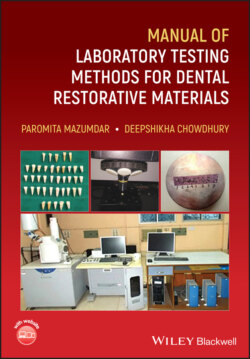Читать книгу Manual of Laboratory Testing Methods for Dental Restorative Materials - Paromita Mazumdar - Страница 11
Good to Know
ОглавлениеThe Universal Testing Machine is named so as it is capable of testing compression, tension, bending and flexion.
It works by measuring the stress–strain relationship of each material.
Tensile strength, diametral compression test, compressive strength, flexural strength, resistance to fatigue, hardness, elastic modulus, fracture toughness and bond strength.
Different equipment are used for testing different mechanical properties. Each of these tests may be conducted using either tooth or materials or both (in case of bonded structures). All these tests require variations in the assembly. Most of the tests except hardness require the use of Universal Testing Machine (UTM) where the sample preparations differ for each test. For instance, if tensile testing is done on a sample, the shape of the sample is dumb bell shaped; it is designed so that the specimen can be gripped at each end and stretched. For compressive strength testing, cylindrical‐shaped specimens are tested. Bar‐shaped specimens are used for flexural strength testing (as shown in Figures 1.1 and 1.2).
Figure 1.1 Universal testing machine.
Figure 1.2 Tooth sample testing.
